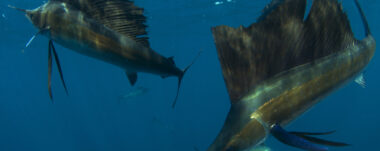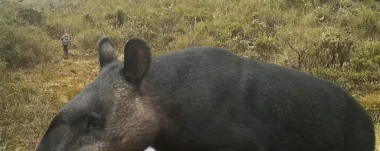Cerro Chirripó: Land of Eternal Waters

Cerro Chirripó is the highest mountain in Costa Rica and one of the most iconic destinations for mountaineering and ecotourism in Central America. Its summit reaches 3,822.64 meters above sea level, rising above the Cordillera de Talamanca within the Chirripó National Park. “https://www.sensorialsunsets.com/especies-endemicas-de-talamanca-costa-rica/”>Talamanca mountain range within Chirripó National Park, a protected area since 1975.
Unique landscapes and ecosystems
The ascent to Chirripó is a journey through multiple ecosystems that change with altitude: from humid, cloudy tropical forests laden with epiphytes to the open landscapes of the subalpine páramo.
One of the park’s main attractions is its glacial formations, shaped around 25,000 years ago: U-shaped valleys, cirques and glacial terraces, moraines, and glacial lakes dot the landscape. Its name, “Chirripó”, comes from the Cabécar language and means “Land of Eternal Waters”.
On clear days, from the top you can see both the Pacific Ocean and the Caribbean Sea, as well as unforgettable sunrises above the clouds.



Cerro Chirripó: the experience of climbing
The official trail starts in San Gerardo de Rivas and covers about 20 kilometers to the summit. It is a demanding hike that usually takes two or three days, with an overnight stay at the Crestones Base Refuge.
Weather conditions are unpredictable: nights can drop to below-freezing temperatures, while days can be sunny and warm. The lowest temperature recorded in Chirripó and Costa Rica is –9 °C.
Best time of year to visit
- Dry season (December–April): considered the ideal season, with trails in better condition and greater visibility. January, February, and March offer the clearest sunrises. However, it is also the busiest time of year, and it is recommended to book at least one year in advance.
- Green season (May–November): fewer tourists and more lush landscapes, although with frequent rain, muddy trails, and more demanding hikes.
Biological diversity
Chirripó National Park is home to extraordinary biodiversity. Among its trees, the most notable are oak trees (Quercus spp), aguacatillo (Ocotea sp), ira rosa (Nectandra sp), sweet cedar (Cedrela tonduzii), and tirrá (Ulmus mexicana).
In terms of fauna, it is home to iconic species such as the Central American tapir (Tapirus bairdii), the spider monkey (Ateles geoffroyi), coatis, mountain goats, peccaries, agoutis, and the country’s six species of wild cats. Although difficult to spot, they are key to the park’s ecological balance. Birds also play a leading role: the majestic resplendent quetzal (Pharomachrus mocinno), the tufted eagle, the black guan, the peacock guan, the white-faced woodpecker, and the goldfinch are just some of the species that visitors can spot.
In 1904, Father Agustín Blessing, a missionary from Talamanca, was the first white man to reach the summit, according to indigenous accounts. Expeditions followed in 1905, 1914, 1915, 1920, 1932, and 1942. Today, more than a century later, Chirripó not only represents a physical and spiritual challenge, but also an opportunity to support local development. Nearby communities offer transportation, lodging, food, and handicrafts, which contributes directly to the rural economy.
Sensorial Sunsets
Previous article Whales and Dolphins: everything about the 15th edition of the festival in Marino Ballena National Park
Navigate articles





